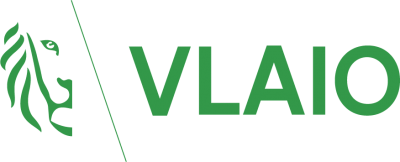Topics
We organise our actions in six thematic & strategic agendas:
Strategic Agendas:
Bio-economy
Circular Construction
Chemicals/Plastics
Manufacturing Industry
Food Chain
Water Cycles
Seven leverages provide additional support:
Leverage effects:
Lever Policy Instruments
Lever Circular Procurement
Lever Communication
Lever Innovation & Entrepreneurship
Lever Financing
Lever Jobs & Skills
Lever Research
What, why and how?
Why are we pursuing a circular economy?
Future visions 2050
How do we see our circular future?
About our management
Who steers what at Flanders Circular?
Waterkringloop camping ’t Hof Bellewaerde
Less drinking water consumption thanks to innovative water treatment concept
Belgium faced periods of prolonged drought and accompanying water shortages in recent years. The use of alternative water sources is more important than ever. When the Bellewaerdehoeve was recently converted into a small campsite, ways were therefore sought to reduce water consumption and minimise the ecological footprint.
Rietland, which specialises in building reed beds for wastewater treatment, installed a Phytoparking on the site through this project. This is a space-saving water treatment concept that combines wastewater treatment with parking space. Thus, Rietland installed an aerated hybrid treatment field on the campsite under the bicycle parking in an open shed, which treats all wastewater, including toilet water (black water).
The Phytoparking consists of 2 treatment sections; one for grey (wastewater from kitchen, shower, washing machine) and one for black water. The treated water is pumped to 2 buffer tanks. The treated wastewater from the Phytoparking is reused for toilet flushing. In exceptional situations of high occupancy and hot weather, it is also possible to upgrade the grey waste water to drinking water thanks to an off-grid drinking water plant of De Watergroep.
Other high-value uses for the treated wastewater, such as irrigation water for agriculture or infiltration to maintain groundwater tables, are still being investigated.
Rietland
Partners Cofrax, Universiteit Gent, Vlakwa, Vlario, camping ‘t Hof Bellewaerde
Sectors
Themes
Organisations
MOST IMPORTANT
RESULTS
- The treated wastewater from the Phytoparking meets all discharge standards (parameters CZV, BZV, TP, TN, TSS and pH). Moreover, no E. coli is present in the treated water. Coliforms are removed by UV.
- The Phytoparking is resistant to varying loads: in both high and low season, the plant realises high removal efficiencies.
- During the camping period (April - November), 127 m³ of wastewater was recovered for the toilets at an energy cost of EUR 0.57 per m³ of treated wastewater. The highest water demand was 10 m³ per day, but water consumption by camping guests was low.
- Together with partners, we developed a digital info board that informs campsite guests about the water cycle. On the campsite and online, everyone can follow how much wastewater is reused.
MOST IMPORTANT
LESSONS LEARNED
- Camping guests prefer rainwater to grey water for drinking water creation and grey to black wastewater for toilet flushing. All guests find the water cycle an added value to the nature campsite.
- A survey of campsite guests shows that they would consider reusing waste water if there are no health risks involved and if cost and energy consumption are low.
- This project attracted wide interest from campsite guests and visitors during Open Monument Day and at the online closing event.
- The Flemish Environment Agency (VMM) thinks a demand-driven reuse system is a good solution where connection is compulsory. It is cautious about writing new legislation on infiltration and irrigation and is interested in future analyses of 't Hof Bellewaerde within the European Multisource project.
WHAT DOES
THE FUTURE HOLD?
Until 2024, the water quality of the Phytoparking will be monitored through the European Multisource project. This will provide more insights on less obvious parameters such as heavy metals, microplastics and micropollutants.
With the newly gathered data from Multisource, Rietland can enter into discussions with VMM to create a clear monitoring procedure for treated wastewater for infiltration or irrigation.
Rietland also wants to use this opportunity to realise several projects in the tourism sector. The project in camping 't Hof Bellewaerde is a great example that can motivate architects and other players in the construction sector to include Phytoparking in their design, thus helping to make the construction sector more sustainable.
Watch another short video about our project here!
















